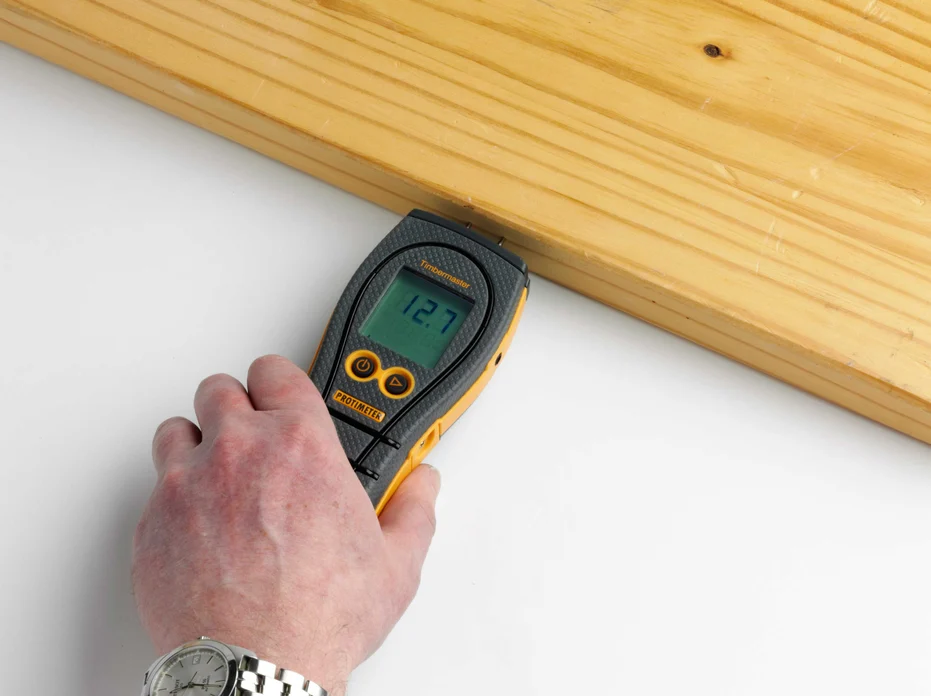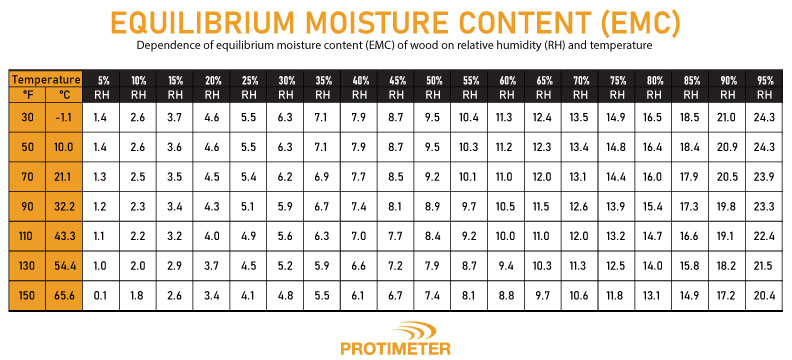
A wooden door suddenly sticking to its frame.
A laminate floor that seems a little loose.
Spider web-like cracks in a plaster ceiling that appear and disappear with the change of seasons.
Common occurrences in the average home, these noticeable changes in materials represent something much bigger. Each of the materials is reacting to humidity changes inside a space.
In technical terms, what’s happening in each instance is moisture equilibration.
Measuring equilibrium moisture content isn’t a way to definitively determine if a home has a moisture issue. It is, however, part of the bigger picture in inspecting a home for dampness.
What is Equilibrium Moisture Content?
Equilibrium moisture content -- EMC for short -- isn’t a watered-down take on Einstein’s theory of relativity.
A term that sounds more complex than it is, equilibrium moisture content is another way to describe moisture movement in materials. By definition, EMC is the point at which a material stops absorbing or releasing moisture to reach a balance with the humidity in its immediate environment.
In other words, EMC is when a material -- such as wood or drywall -- has the same moisture content level as the air around it.
EMC shouldn’t be confused with wood moisture equivalent (WME), though the two are related. They’re both measurements of how materials react to nearby moisture.
WME measures the percentage of moisture content that would be attained by wood in contact with, or in close proximity to, a moisture equilibrium across a host of materials.
In layman’s terms, WME measures moisture content in materials as if they were wood.
EMC most frequently comes up with wood. Because wood is hygroscopic (meaning it has the ability to absorb or release moisture), it reacts to humidity in its environment, compressing or expanding accordingly.
That’s why it’s not uncommon for contractors installing a new hardwood floor to let the lumber sit at the installation site for a few days. During that time, the wood’s moisture level will reach a balance with the air around it. When it’s time to install the flooring, the wood is in equilibrium with the space, and you won’t have to worry about the flooring shifting or not fitting as humidity changes.
Why Equilibrium Moisture Content Matters in Home Inspections
For the home inspector, equilibrium moisture content is another piece of the puzzle in determining moisture’s presence inside a space. It’s also a clue that a home may have a moisture issue.
Like wood, materials that are hygroscopic (think: drywall, plaster, or composite) absorb airborne moisture until they’re in balance with the humidity in that space.
By taking EMC readings, which involves using a thermo-hygrometer and cross referencing its readings with an EMC chart, you’re able to tell if there’s a potential excessive moisture content.
If the thermo-hygrometer’s readings vary greatly from what the EMC chart’s data says the relative humidity should be in relation to temperature, the home almost certainly has a moisture issue.
With this data, a home inspection becomes more refined in the search for excessive moisture and its source.
How to Determine Equilibrium Moisture Content in Wood
Measuring EMC in a home takes time. An initial visual inspection does give some indication that moisture equilibration is happening. For example, you may notice a wood floor’s boards no longer tightly fit together.
Checking for EMC means taking a few measurements with a pin-type meter for actual moisture content in wood over several days and noting changes in readings. You can then compare those measurements to readings taken with a thermo-hygrometer for a space’s relative humidity -- a combination of humidity and temperature -- and compare it to an EMC chart. Fluctuations in both moisture content and relative humidity merit further investigation.
It’s important to keep these readings in perspective -- changes in both may just be a natural byproduct of the environment. Warm and humid climates, such as the southern United States, or those going through a change of season, will affect these readings. It’s when your measurements don’t align with seasonal climate or the daily weather forecast that there’s cause for concern.
It’s helpful to keep an equilibrium moisture chart on-hand, such as the one below (data source: United States Department of Agriculture Forest Service Forest Products Laboratory Research). A quick reference point, wood equilibrium moisture content tables help you effectively and accurately determine the extent of EMC’s impact on materials.

Equilibrium Moisture Content: A Part of the Whole
EMC is just one method to investigate a home for moisture issues. And while there are several factors to consider, measuring EMC helps you better gauge moisture’s presence in a space and compare it to natural environmental causes.
What Else Should You Be Aware of When Measuring Moisture in Buildings?
Download our How to Measure Moisture in Buildings Guide:
